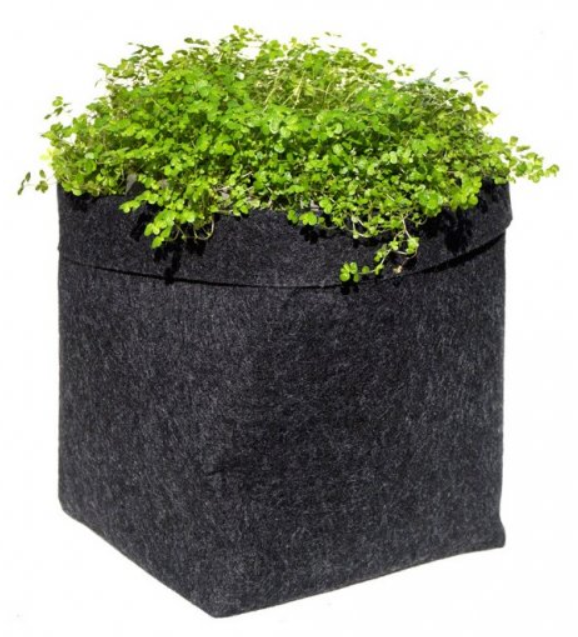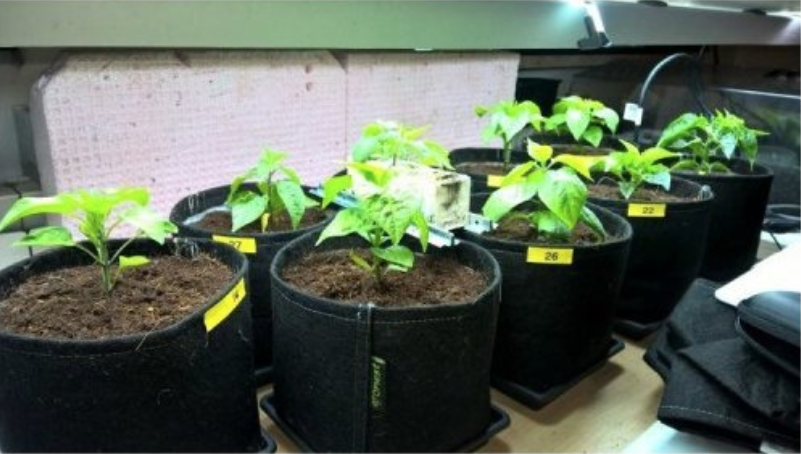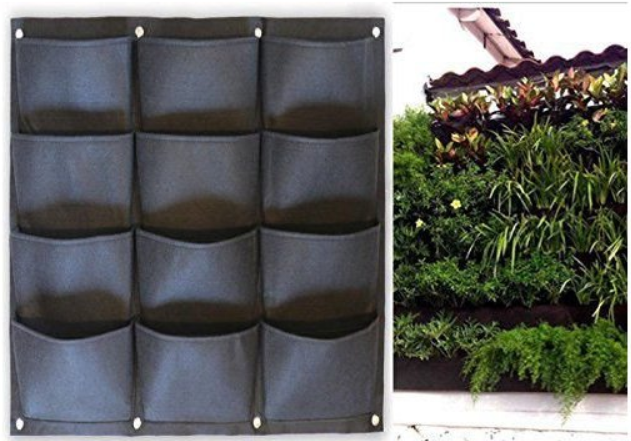Using plastic and clay pots is the known and tried option most growers automatically reach for. However, plastic pots aren’t exactly eco-friendly, and the substrate inside heats up when they’re exposed to sunlight. Recently, fabric pots have been gaining their rightful place on the market. How to use them, and what are their advantages?
The advantages of textile flowerpots
Plants create more extensive root systems in textile pots, which allows them to use the available water and nutrients more effectively. Having a healthier root system positively affects their vitality, size and even the resulting yield.
How does that happen? Well, if the root reaches the side of the pot, it grows through the fabric, it’s exposed to the air and dies. In plastic or clay flower pots, the roots circle and create a dense, round clump on the bottom. Instead, plants in textile pots replace the thicker roots by creating new hair-thin ones throughout the flower pot, which is much more effective for absorbing water and nutrients. Eventually, plants in textile pots use up all the available space in the flowerpot and don’t need repotting as often.
Textile pots are a great fit for annual plants because they can be sterilised and reused. Another one of their undeniable advantages is how compact they are - 4 L and 50 L pots alike fold easily into (comparatively) small packages. They also have better thermoregulation, and the substrate doesn’t get as warm even in direct sunlight.
The vertical flower pots with individual pockets are an inventive option for small outdoor gardens and indoor spaces.
Plant care - differences in watering
Fabric pots are different from plastic or clay ones, and there are two main particularities you should keep in mind.
The root system branches a lot in textile pots and extends through all the available space. Because of that, you should water the whole surface of the soil, not just near the plant’s stem, where the water will run vertically to the bottom of the pot and won’t reach the entire root system.
Considering that the textile pot breathes more, plants usually require watering more often than they would in plastic pots. On the other hand, the risk of overwatering them is much lower because the branching roots use more water. The excess collects in the saucer, and you can pour it out easily.
Even though textile pots are a new trend, you don’t have to worry about spending a lot of money just for the novelty - the smallest ones cost just a little under 1 €.
We recommend:
- PLANT!T Round Textile DirtPot 7l
- Gronest Textile Flowerpot 380l - YBP
- ProPot Wall 4 - Vertical Fabric Pot
More articles:
- AutoPot - Economic Hydroponic Systems for High Yields
- Removing the leaves for higher yields – how does it work?
- BioNova Veganics – fertilisers not just for vegans
If you have any questions, don't hesitate to contact us at info@higarden.eu.



